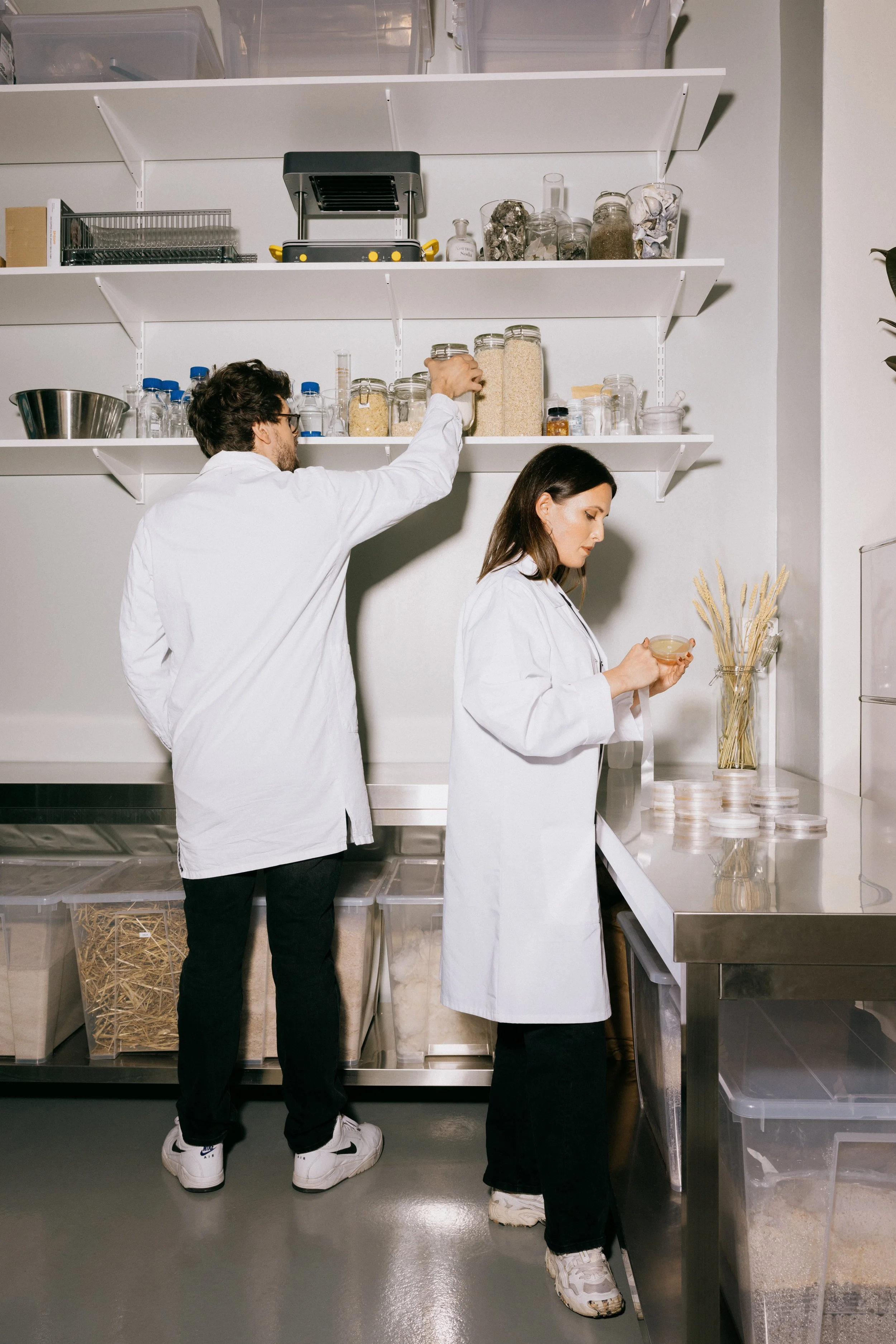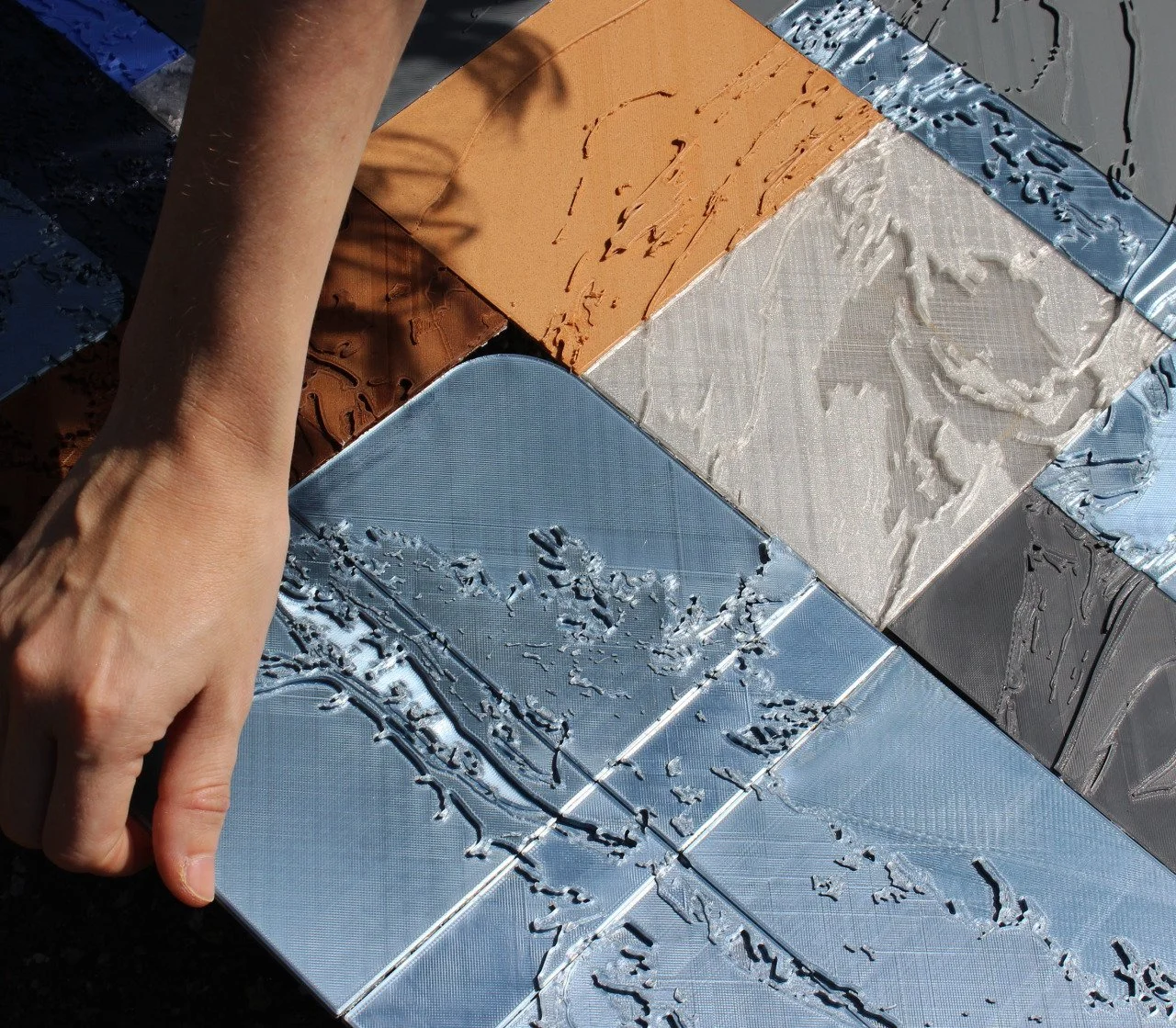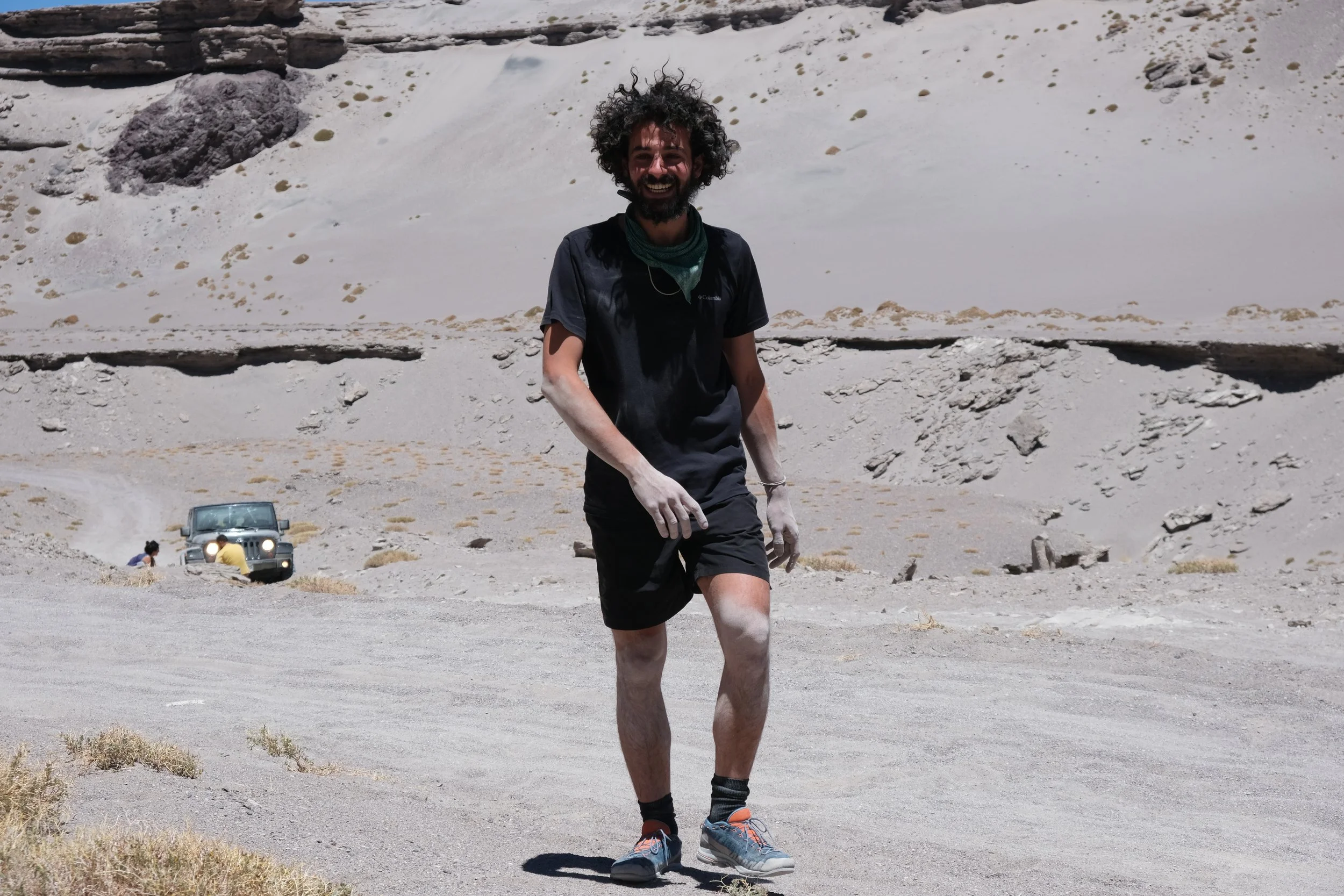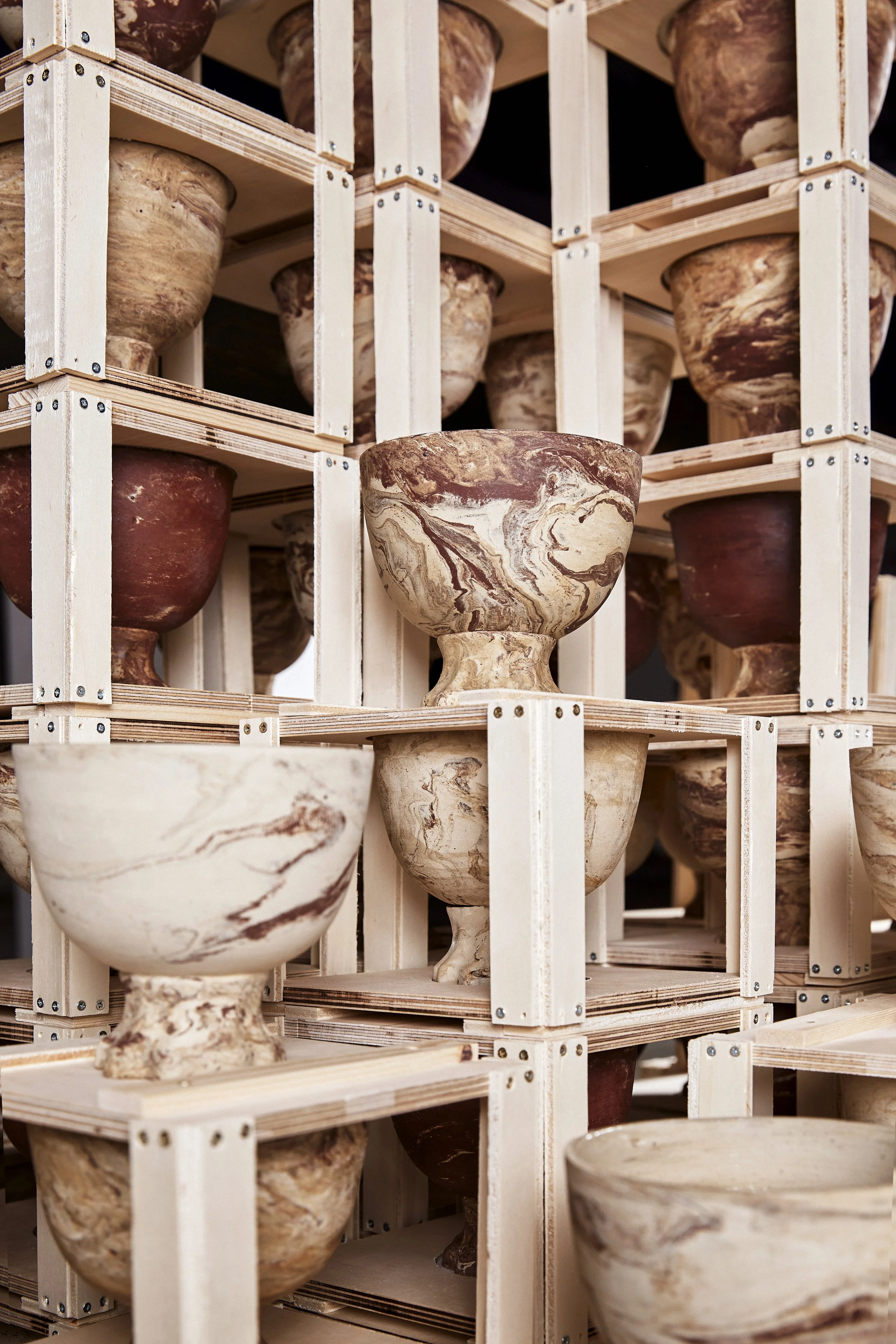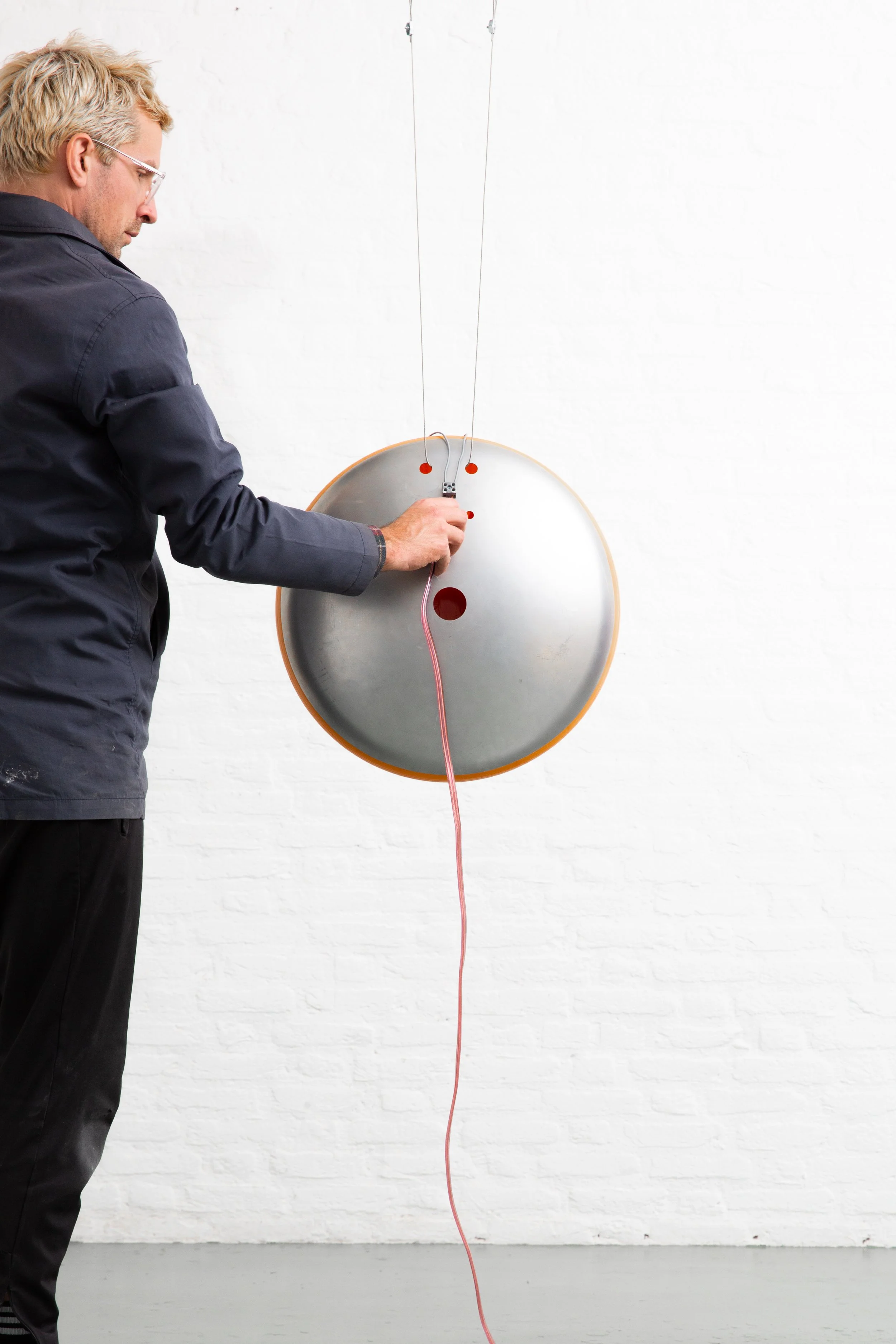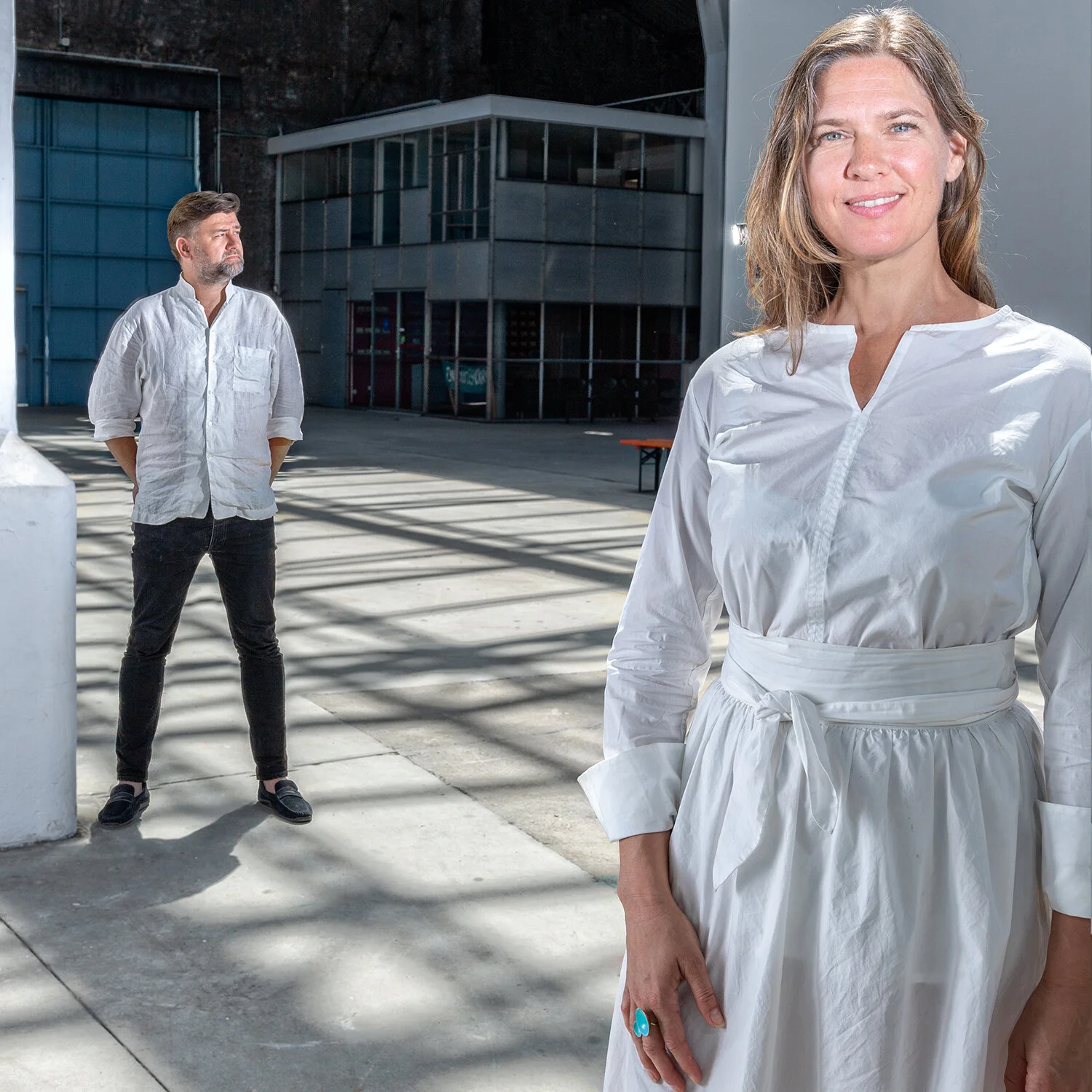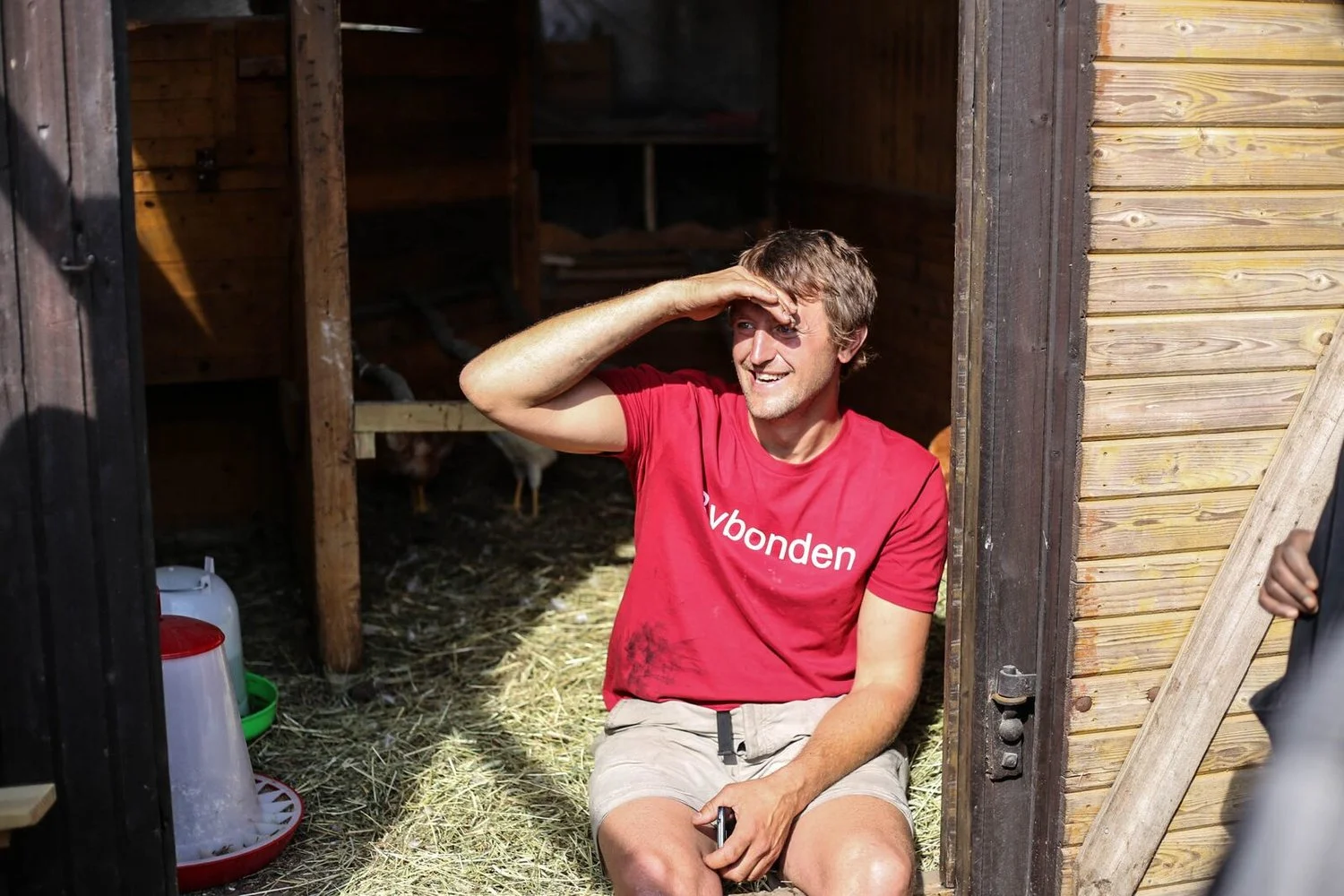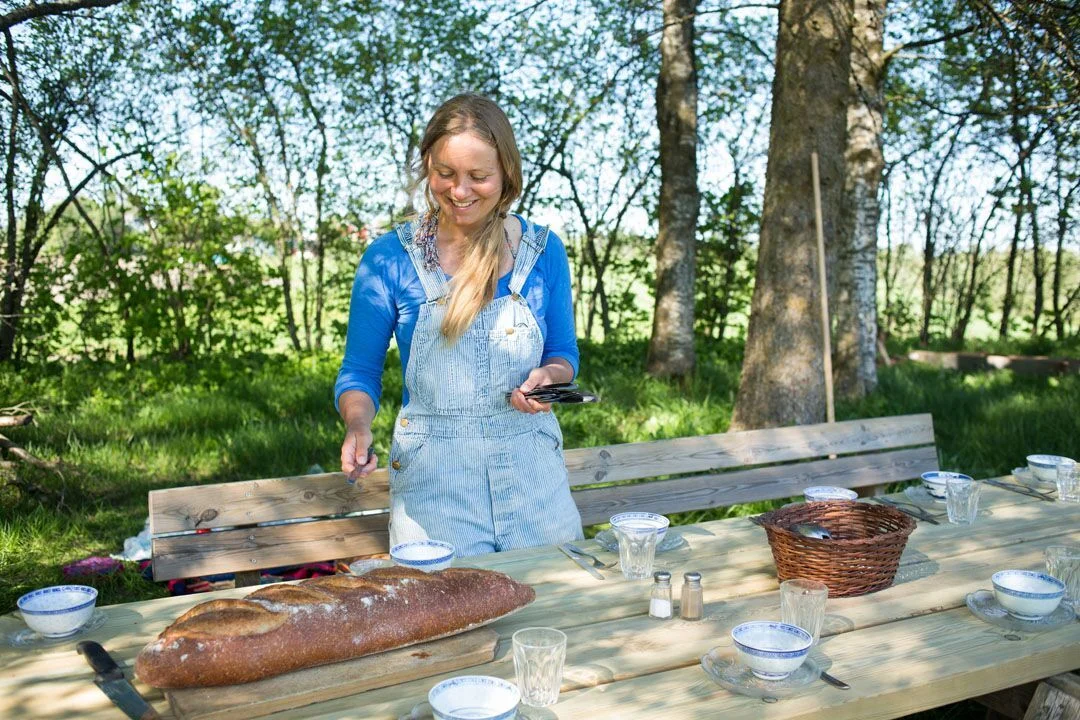Hunting & Narud on Work and Play
Amy Hunting & Oscar Narud (Photo: Bella Fenning)
Hunting & Narud is a Norwegian born design practice exiled in London. Approaching traditional materials and processes with a fresh take, they have produced some of the most breathtakingly beautiful furniture to come out of Norway the last years.
We have chatted with Amy on the Dreams and Work of Hunting & Narud - and the Future of Work.
# What do you have in front of you right now - and how does that relate to your mission as a designers?
We are currently spending a lot of time in the workshop finalising a batch of our Apex Series for an Italian fashion house. The glass has been handblown in the Czech Republic from an incredibly skilled glass blower, and the wooden cones have been turned by a craftsman who specialises in turning intricate pieces of wood. We went down to visit him last week and he is such a rare find, he’s so skilled and passionate about his work and he’s even made most of his machines himself.
Both of the elements in this tables are a real challenge to manufacture as they push the limits of what’s possible in terms of volume, production process and material properties. So finding skilled craftsmen and driving them a bit crazy is something we really love. We enjoy making ourselves, but don’t want to limit what we do to our own production abilities.
Simultaneously we are in the design stages of a 8 meter long reception desk for a residential building here in London. We approach it quite similarly and are taking a selection of beautiful materials and making skills and bringing them together in one, unified object which will meet people in their lobby every day.
In a reverse from the norm, handblown glass vessels encase and support turned wooden cones in Hunting & Narud’s Apex Tables. With minimal contact between the two materials, the apex of the cone which is a small 5mm point, is the only part of the wood in direct contact with the glass creating a sharp visual contrast whilst encapsulating and highlighting the beauty of the wooden cones. (Photo: Petr Krecji)
# Office work - and indeed work in general - is under deep transformation. What are your thoughts about the future of work? What will the workplace look like in 10 years?
It’s definitely rapidly changing and just looking at the kind of places that are popping up in London to meet the demand of the startups, the freelancers and the small companies is really interesting. Some people like to claim that their office is where their laptop is, but to get focused work done nothing beats a dedicated space to work. It does seem that there’s a shift and people are experimenting with the office format and figuring out the essential elements of what they need in a healthy and productive environment.
Fundamentally we think it’s important to investigate what kind of work you do, and understand that one size doesn’t fit all. You can rent an office in a container or a train carriage, but personally we think the most important thing is daylight and a bit of piece and quiet.
Michael Marriott on Keel Series Bench "By focusing on one of the most ancient engineering principles known to man, Narud has generated a series of forms that all feed off the nature of wedging. The finished objects hold some of that direct basic force found in machinery and equipment made during the industrial revolution, and with a similarly utilitarian vernacular."
Photo by Sylvain Deleu
# Hunting & Narud’s work is often about discovering new possibilities in well known materials and processes, which you do brilliantly. Are you particularly inspired by any entirely new or emerging technologies?
We are always researching and looking for ways of producing and manufacturing. We have great respect for all the skills other people have and are more drawn to the old school ways than for example the dreaded 3d printing which just looks so unforgivingly ugly, whatever you do with it.
What were your highest dreams when you were children - and do they continue to inform the work you do today?
We both dreamt of exploring and creating things before we perhaps knew what a designer was. Fascinated with drawings and understanding the possibility to turn them into three dimensional things and exploring functions was a real turning point.
Felt & Gravity collection: The hanging shelves in 100% wool utilises the force of gravity and gets their strength from the weight placed inside them. The unit is created with a flat pack construction and solid brass wing nuts and bolts keep it together. (Photo: Photo by Carsten Aniksdal)
Do you have a particular non-design field of inspiration? Please give away some treasures of inspiration - music, people, comics, philosophers or links?
We had a baby 6 months ago, and we have been spending most of our time getting to know this funny little person. So babies are highly recommended!
As is: 10 things I have learned - This website has a great collection of insights into design and creative thinking.
Comedians in Cars getting Coffee is a great series of interviews, The Larry David one is a favourite
Be sure to check out Hunting & Narud's website at www.huntingnarud.no
Spectral Manifesto: An installation that prompts you to respond with an action to a set of 7 moral questions. The outcome of these decisions is visualised immediately, and a abstract graph of the total sum and possibly long term effect is created. The 7 themes are represented by the individual colours in the spectrum, which create patterns, new blends of colours and a unique outcome every time.
Elementa Conversations:









